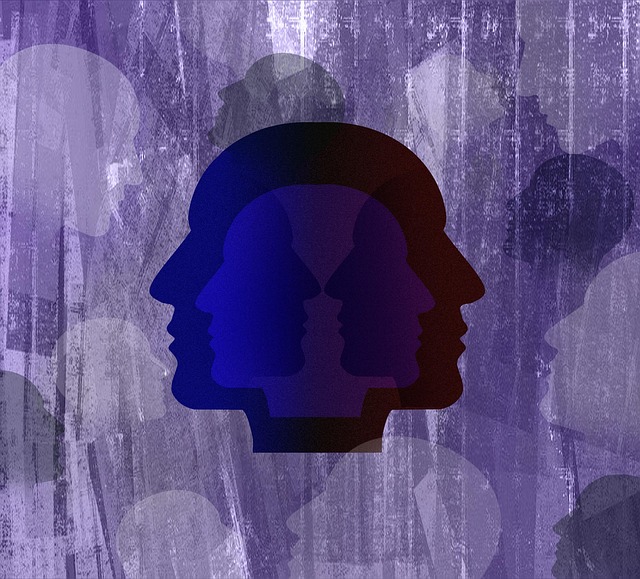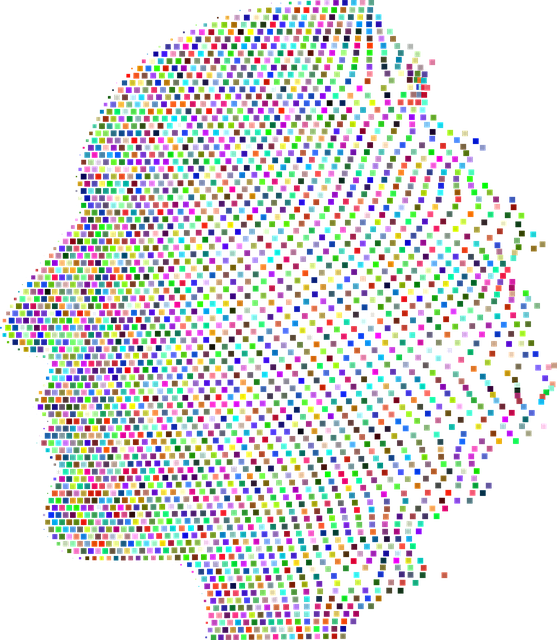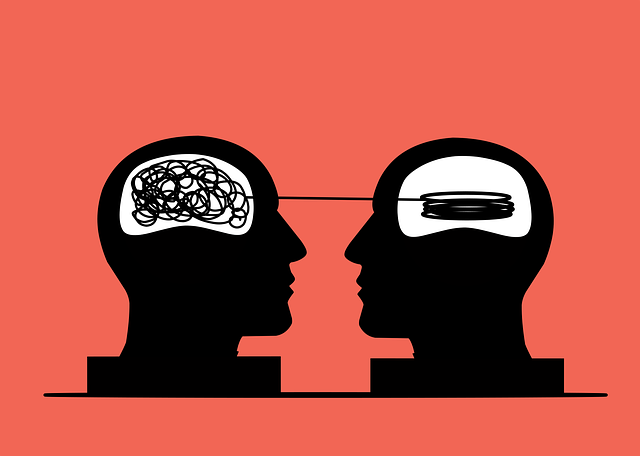Managing Anxiety: CBT, Mindfulness & Lifestyle for ASD Wellness
Anxiety is a significant challenge for individuals with Centennial Autism Spectrum Disorder (ASD), s…….
In the ever-evolving landscape of healthcare, the diagnosis and treatment of autism spectrum disorder (ASD) have undergone significant transformations. One pioneering approach gaining global recognition is Centennial ASD Therapy, a revolutionary therapeutic method designed to address the unique challenges presented by autism throughout the lifespan. This comprehensive article aims to provide an in-depth exploration of this therapeutic paradigm, its impact, and its potential to reshape the lives of individuals on the spectrum. By delving into various facets, from its foundational principles to global implications, we will uncover the multifaceted nature of Centennial ASD Therapy and its role in fostering a more inclusive society.
Centennial Autism Spectrum Disorder Therapy (CASD Therapy) is an innovative, personalized approach to treating individuals with ASD, encompassing a wide range of ages from childhood to adulthood. It is a holistic therapy that goes beyond traditional interventions by considering the individual’s entire lifespan and the evolving nature of autism. The core components include:
Early Intervention: Focusing on the critical period of brain development in young children, this aspect aims to enhance social communication skills and reduce behavioral challenges through tailored strategies.
Personalized Treatment Plans: Each patient receives a unique treatment regimen based on their specific strengths, weaknesses, and preferences. This individualized approach ensures that therapy aligns with personal goals and promotes long-term success.
Life Skills Development: CASD Therapy emphasizes teaching practical life skills, such as self-care, social interactions, and adaptive behaviors, enabling individuals to navigate daily routines more independently.
Community Integration: Encouraging participation in community activities and social groups helps patients develop relationships, enhance their sense of belonging, and acquire real-world experience.
Family Support: Recognizing the vital role of families, this therapy involves them in the process, providing tools to support their loved ones’ long-term growth and well-being.
The concept of CASD Therapy has evolved over several decades, building upon early autism interventions while incorporating advancements in neuroscience and behavioral research. Here’s a brief historical overview:
Early Years: The 1960s and 1970s saw the emergence of applied behavior analysis (ABA) as a dominant therapy for ASD. This approach focused on discrete trial training, which involved breaking down tasks into manageable steps.
Developmental Approaches: In the late 20th century, researchers began to emphasize the importance of early intervention and developmental strategies. The ’90s introduced techniques like joint attention training and naturalistic behavior interventions.
Personalized Care: As knowledge about autism expanded, therapists started tailoring treatments to individual needs. This shift led to the development of CASD Therapy, combining evidence-based practices with a personalized touch.
Lifespan Perspective: A pivotal moment was the recognition that ASD is not merely a childhood condition but persists throughout life. This realization prompted the creation of comprehensive therapies designed for various age groups.
CASD Therapy has left an indelible mark on the global autism support landscape, with its influence extending across continents. Here’s an analysis of its international impact:
| Region | Impact and Trends |
|---|---|
| North America | Leading in ASD research and therapy development, the US and Canada have high adoption rates of CASD Therapy. Early intervention programs are gaining traction, thanks to increased awareness and funding. |
| Europe | The European Union has implemented policies promoting inclusive education and support services for individuals with ASD. Countries like Germany and the UK are at the forefront of CASD Therapy research and implementation. |
| Asia Pacific | With a growing population of individuals on the spectrum, countries in this region are investing in therapy infrastructure. Japan and Australia have shown significant interest in personalized ASD interventions. |
| Middle East & Africa | The MEA region is witnessing increased awareness about autism, leading to the establishment of specialized centers offering CASD Therapy. The United Arab Emirates has become a hub for innovative autism treatments. |
These trends highlight the global recognition and acceptance of Centennial ASD Therapy, with each region contributing to its evolution and adoption.
The economic implications of CASD Therapy are multifaceted, impacting both healthcare systems and society at large.
Global Market Size: According to a 2022 report, the global autism therapy market is valued at USD 31.5 billion and projected to grow at a CAGR of 8.2% from 2023 to 2030.
Regional Disparities: The cost of ASD therapies varies across regions, with North America and Western Europe bearing higher expenses due to advanced healthcare infrastructure. Emerging markets are expected to witness increased investment in the coming years.
Private investments in CASD Therapy research and development have been substantial, fueled by the potential for life-changing outcomes. Government funding plays a critical role in ensuring accessibility through publicly funded healthcare programs.
Healthcare Costs: Early intervention strategies associated with CASD Therapy can reduce long-term care expenses by improving patients’ functional abilities and decreasing behavioral challenges.
Productivity and Employment: As individuals with ASD gain better support, they are more likely to access education and employment opportunities, contributing to higher productivity and reduced reliance on social welfare systems.
Technology has been a game-changer in CASD Therapy, offering innovative tools and platforms to enhance treatment outcomes:
Telehealth: Remote therapy sessions via video conferencing have improved accessibility, especially for individuals in remote areas or with limited mobility.
Mobile Apps: Numerous apps cater to various ASD-related needs, from social skills training to sensory toolkits, providing customizable resources on the go.
Virtual Reality (VR): VR is revolutionizing exposure therapy by creating immersive environments that help patients confront fears and anxiety in a controlled setting.
Artificial Intelligence (AI): AI algorithms can analyze vast amounts of data to personalize treatment plans, predict outcomes, and assist in behavioral monitoring.
These technological breakthroughs have the potential to revolutionize CASD Therapy, making it more accessible, effective, and tailored to individual needs.
The development and implementation of CASD Therapy are significantly shaped by policies and regulations that ensure ethical practices and quality care:
International Guidelines: Organizations like the World Health Organization (WHO) provide evidence-based guidelines for autism interventions, including CASD Therapy principles.
Local Legislation: Each country enacts its laws governing healthcare, education, and social services, which indirectly influence the availability and funding of ASD therapies.
Reimbursement Policies: Healthcare systems’ reimbursement policies play a pivotal role in determining patients’ access to CASD Therapy. Many countries are introducing coverage for evidence-based interventions.
Ethical Considerations: Strict ethical guidelines ensure that therapy practices respect patient autonomy, maintain confidentiality, and adhere to cultural sensitivity.
Despite its promise, CASD Therapy faces several challenges and criticisms that require thoughtful strategies for resolution:
Accessibility: One of the primary concerns is the limited accessibility of CASD Therapy, particularly in underserved regions and low-income families. Addressing this issue may involve government subsidies and insurance coverage.
Stigma and Misunderstanding: Lack of awareness and societal stigma surrounding autism can hinder parents’ willingness to seek therapy. Education campaigns targeting both professionals and the general public are essential.
Training and Expertise: Ensuring that therapists receive adequate training in CASD Therapy techniques is crucial for consistent and effective treatment. Standardized training programs can help address this challenge.
Cost-Effectiveness: Critics argue that some interventions within CASD Therapy may be expensive, questioning their long-term cost-effectiveness. Research into cost-saving strategies and value-based care models is needed.
Real-life applications of CASD Therapy have led to remarkable outcomes, offering valuable insights into its potential. Here are a couple of case studies:
Case Study 1: Sarah’s Journey
Sarah, now aged 25, was diagnosed with ASD at 3 years old. Her parents enrolled her in a comprehensive CASD Therapy program that included early intervention, speech therapy, and social skills training. Through personalized support, Sarah learned to communicate her needs effectively, improve her social interactions, and develop essential life skills. By adolescence, she transitioned successfully into high school, eventually graduating with honors and pursuing higher education. Sarah’s story exemplifies how CASD Therapy can foster growth, independence, and a fulfilling life on the autism spectrum.
Case Study 2: The Dubai Model
The United Arab Emirates (UAE) has been hailed for its inclusive approach to autism support. In Dubai, the government established the Autism Centre, offering a range of CASD Therapy services tailored to individual needs. The center’s holistic approach includes therapy, education, and community integration programs. This model has led to improved outcomes and increased social participation for individuals with ASD in the UAE.
The future of Centennial ASD Therapy is brimming with potential, guided by emerging trends and strategic considerations:
Personalized Medicine: With advancements in genomics and neuroscience, personalized treatment plans will become even more precise, tailoring interventions to each individual’s unique needs.
Community-Based Support: There will be a growing emphasis on community integration, fostering inclusive environments where individuals with ASD can thrive alongside their neurotypical peers.
Technological Integration: AI, VR, and other technologies will continue to play a pivotal role in therapy delivery, enhancing accessibility and outcome measurement.
Global Collaboration: International collaboration among researchers, therapists, and policymakers will accelerate the sharing of best practices, leading to improved global standards for CASD Therapy.
Centennial Autism Spectrum Disorder Therapy represents a significant advancement in our understanding and support of autism. Its comprehensive approach, grounded in evidence-based practices and personalized care, has the potential to transform lives and foster inclusive communities. As we navigate the future, continued research, collaboration, and investment in CASD Therapy will be essential to ensure that individuals with ASD can reach their full potential.
Q: What age group does CASD Therapy primarily serve?
A: Centennial ASD Therapy is designed for individuals across the lifespan, from early childhood to adulthood. While its name suggests a 100-year span, it caters to all ages within that range and beyond.
Q: Is CASD Therapy covered by insurance?
A: Insurance coverage varies; some plans include funding for evidence-based ASD therapies like CASD Therapy. Parents or caregivers are advised to check with their insurance providers and advocate for policy changes to improve accessibility.
Q: How does CASD Therapy differ from traditional autism treatments?
A: Unlike traditional methods that often focus on discrete skills, CASD Therapy takes a holistic approach, considering the individual’s entire lifespan and personal goals. It emphasizes personalization, community integration, and family involvement.
Q: Can CASD Therapy help individuals with severe autism?
A: Absolutely. CASD Therapy is tailored to meet diverse needs, including those of individuals with severe ASD. Early intervention and personalized strategies can significantly improve their quality of life and functional abilities.
Q: What role does family support play in CASD Therapy?
A: Family involvement is a cornerstone of CASD Therapy. Parents and caregivers are equipped with tools to support their loved ones’ therapy goals, fostering a supportive environment that extends beyond the clinical setting.

Anxiety is a significant challenge for individuals with Centennial Autism Spectrum Disorder (ASD), s…….

Community outreach programs like Centennial Autism Spectrum Disorder (ASD) Therapy are vital for rai…….

The Reinforcement-Facilitated Therapy (RFT) model, through practices like RFM (Relational, Functiona…….

Loss, grief, and bereavement are deeply personal journeys requiring specialized support, especially…….

Centennial Autism Spectrum Disorder (ASD) therapy focuses on empowering individuals through tailored…….

Centennial Autism Spectrum Disorder (ASD) therapy focuses on emotion regulation, using tailored exer…….

Mental Health Crisis Hotlines, such as Centennial Autism Spectrum Disorder Therapy, are vital 24/7 r…….

Positive thinking exercises tailored for individuals with Centennial Autism Spectrum Disorder (ASD)…….

Individuals with Autism Spectrum Disorder (ASD) face elevated risks of substance abuse due to unique…….

For individuals with Centennial Autism Spectrum Disorder (ASD), self-care is personalized and essent…….